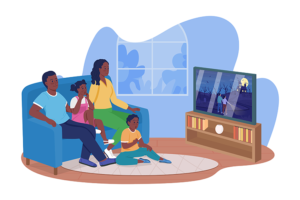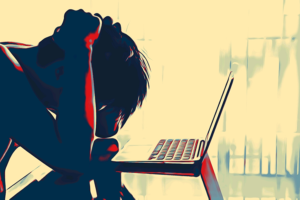By NAMI Southwest Washington
I never thought I’d be telling my story to help break the silence surrounding mental health, but here I am, ready to share a piece of myself that I used to keep buried deep inside. I hope that by sharing my journey, I can help someone else realize what took me years to figure out: you are not alone, and there is hope—even when it feels impossible to find.
My childhood was a mix of chaos and uncertainty. I grew up constantly worrying about when our next meal would come, whether our electricity would stay on, and what the next argument between my parents would bring. Financial instability plagued our family, but more than that, there was an overwhelming emptiness—no emotional support, no comforting words to tell me everything was going to be okay. It was like we were all just drifting in the same storm, but none of us could see or reach each other.
I learned how to survive on my own from a young age, but “survival” doesn’t mean “thriving.” I held in my emotions, kept my head down, and tried to make myself as invisible as possible. As I got older, I felt like I was always teetering on the edge—afraid to fall but too tired to keep fighting to stay balanced. The financial instability and emotional void of my family life left deep scars, and I didn’t know how to make them heal.
When I hit my teenage years, I discovered a way to escape—a way to silence the storm that constantly roared inside my mind. Alcohol and drugs became my companions, my crutches. They helped me forget the constant anxiety, the lingering sadness, and the emptiness that followed me like a shadow. For a while, I thought I had found my answer. Drinking made me feel numb to the pain and my past, and drugs made it easier to block out the pieces of my broken self. But deep down, I knew I was only running. I was dissociating from my own life, drowning out the traumas of my past instead of facing them.
This cycle of self-destruction continued well into my adulthood. I was in my late 20s and early 30s, and I felt like my life was slipping away from me, but I couldn’t figure out how to change. It was as if I was caught in a whirlpool, and every time I tried to swim to the surface, I was pulled right back under. I had accepted that maybe this was just how my life was going to be.
Then one day, by pure chance, I came across an article. It was one of those stories that, on the surface, seemed like just another piece of content meant to inspire people to “keep going” or “find hope.” I almost scrolled past it, but something made me pause and read. And as I read, I felt like I was staring into a mirror—someone else had gone through a childhood like mine, facing financial struggles, a broken family, and an utter lack of emotional support. But unlike me, by the time this woman was in her 30s, she had made a change.
She had found a way to break free from the cycle of self-destruction. She reached out to friends, confided in her family, and found a therapist who helped her start to heal. She found hope in the very things that I had distanced myself from—connection, community, and support. It was a moment of reckoning for me. I felt a mix of emotions—fear, anger, sadness, and then, strangely enough, hope. For the first time, I realized that there was another way to live, that there were other people who had felt like me and had managed to find light in the darkness. I wasn’t alone, and that realization shook me to my core.
That article was the push I needed to seek help for myself. I reached out to a close friend and finally spoke about my struggles. It was terrifying to peel back the layers and expose the wounds I had been covering up for so long, but it was also freeing. The support I received made me feel something I hadn’t felt in years—safe. I took the next step and found a therapist. Talking to her helped me unpack the pain from my childhood, and instead of using substances to numb myself, I started to learn how to feel and process my emotions. I’m not going to say it was easy; there were times when the pain felt unbearable, and I wanted to run back to my old coping mechanisms. But this time, I had a lifeline—my therapist, my friends, and the understanding that there was hope.
Over time, I started to build a new foundation for my life, one where I could experience joy, sadness, anger, and love without feeling like I was drowning. I started to rediscover who I was beneath the layers of pain and self-doubt, and I began to see a future for myself—a future where I could live openly and authentically.
As we recognize Mental Illness Awareness Week from October 6-12, my hope is that my story reaches someone who feels as alone and lost as I once did. I want you to know that your pain is valid, and that it’s okay to ask for help. Whether you’re struggling in silence or numbing your pain with unhealthy habits, remember that there is a community out there ready to support you.
Mental health isn’t just about surviving—it’s about finding hope, seeking support, and learning to thrive. It’s about understanding that you don’t have to do it all alone and that there are resources available to help you start your journey toward healing. NAMI Southwest Washington is here to provide that support, and you don’t have to wait for a life-changing article to make the choice to reach out.
If my story resonates with you, please take this week as an opportunity to seek help. Talk to a friend, call a therapist, or reach out to NAMI for resources. It’s never too late to break free from the cycle and build a life where you can find joy, peace, and understanding.




